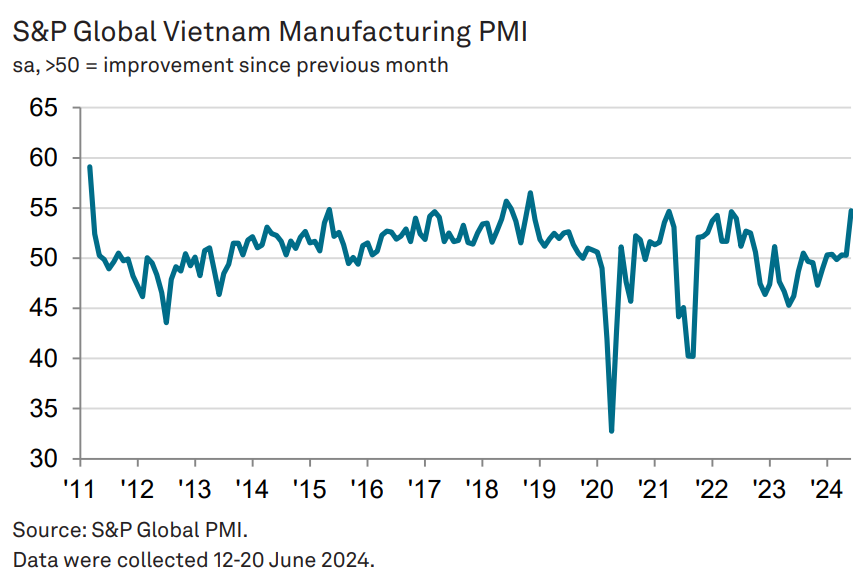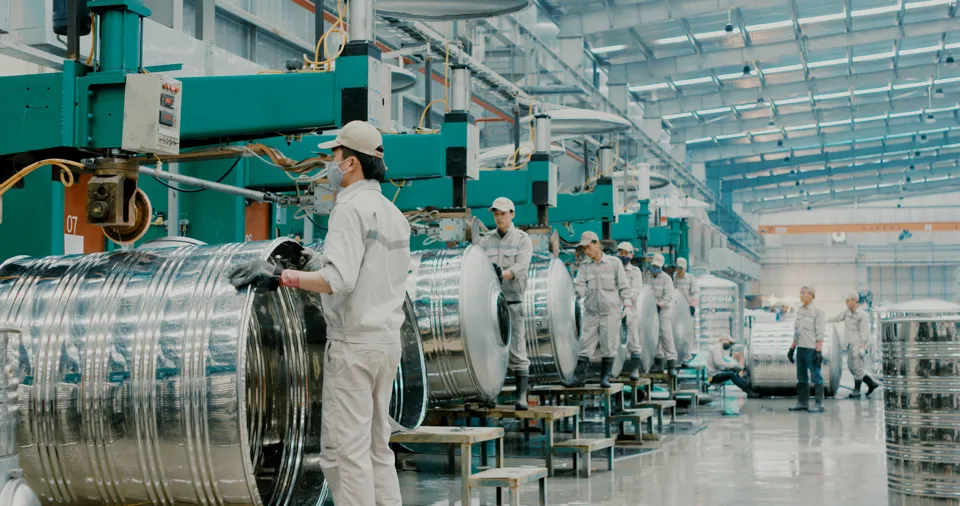Vietnam’s industrial order growth surges to near-record high in June
New orders rose to an extent only exceeded during the opening month of data collection for the survey in March 2011.
The rate of expansion in the Vietnamese manufacturing sector accelerated sharply at the end of the second quarter, with new orders rising at one of the fastest rates on record.
This prompted firms to ramp up production and purchasing activity and increase staffing levels for the first time in three months, according to the latest report from the S&P Global Vietnam.
“The Vietnamese manufacturing sector burst into life at the midway point of the year, shrugging off the relatively modest growth seen in recent months thanks to a rapid increase in new orders. The strength of the expansion in new work highlighted staff shortages at some firms and resulted in an accumulation of outstanding business. In response, firms took on additional staff at a solid pace,” said Andrew Harker, Economics Director at S&P Global Market Intelligence.
"The growth spurt, however, was accompanied by higher cost burdens, with increased transportation costs in particular acting to push input price inflation to a two-year high. Rising inflation could act to dampen demand further down the line, but for now, firms will be enjoying the influx of work experienced in June."
In particular, the S&P Global Vietnam Manufacturing Purchasing Managers' Index (PMI) rose sharply to 54.7 in June from 50.3 in May.
Not only did the reading signal a third consecutive monthly improvement in the health of the sector, but it also indicated that business conditions strengthened markedly. The improvement in operating conditions was the joint-strongest since November 2018, equal to those seen in April 2021 and May 2022.
The much greater strengthening of business conditions reflected substantial increases in both output and new orders at the mid-point of the year. In particular, new orders rose to an extent only exceeded during the opening month of data collection for the survey in March 2011.
An improvement in demand was reported, with some customers coming back to request additional orders during the month. In some cases, competitive pricing has helped firms to secure new business. New export orders meanwhile increased at the fastest pace since February 2022, albeit at a pace that was still much softer than seen for total new business.
| Production of stainless water tanks at Son Ha Company. Photo: Khac Kien/The Hanoi Times |
The acceleration in growth of new orders was matched by manufacturing production, with June seeing the steepest increase in output for just over five-and-a-half years. The strength of the rise in new orders put pressure on operating capacity, with backlogs of work increasing for the second time in three months.
Although slight, the pace of accumulation was the sharpest since January. In some cases, firms indicated that staff shortages had led to the build-up of outstanding business. As a result, workforce numbers were raised for the first time in three months, and at a solid pace. In some cases, new hires were only temporary, however.
Firms also expanded their purchasing activity, with input buying increasing for the third month running and at the fastest pace since June 2022. Despite this, stocks of purchases continued to fall amid the use of inputs to support production. Similarly, stocks of finished goods decreased as inventories were shipped to help meet sales needs.
Moreover, the drop in post-production stocks was the largest in three years. The rate of input cost inflation accelerated for the third month running in June and hit a two-year high. There were widespread reports of higher transportation costs, alongside increases in oil prices and the cost of imported items.
In turn, manufacturers also raised their selling prices to the largest degree since June 2022. Charge inflation has now been recorded in two successive months. Better raw material availability helped suppliers to speed up deliveries in June and lead times shortened for the first time in 2024 so far.
However, the improvement in vendor performance was only slight amid international shipping issues. The prospect of favorable business conditions continuing supported confidence in the year-ahead outlook for manufacturing output. Sentiment hit a three-month high as around half of respondents predicted an expansion.












